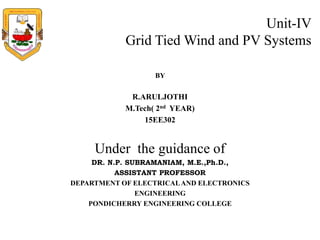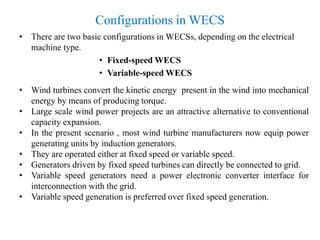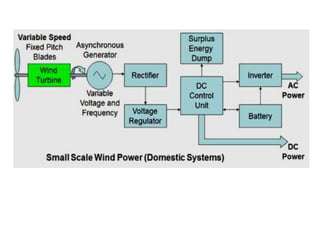This document discusses different types of grid-tied wind and photovoltaic (PV) energy systems. It describes fixed-speed and variable-speed wind energy conversion systems (WECS). Fixed-speed WECS directly connect the induction generator to the grid, while variable-speed systems use power electronic converters like doubly-fed induction generators (DFIG) or synchronous generators with frequency control. The document also outlines different generator and power conversion configurations used in variable-speed WECS, including wound-rotor induction generators with external resistances.
























